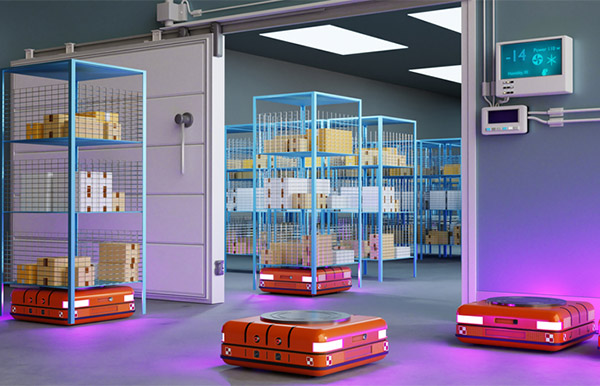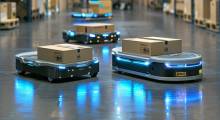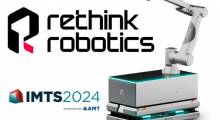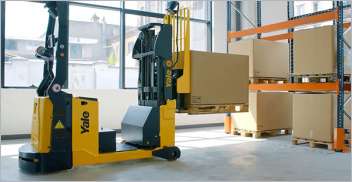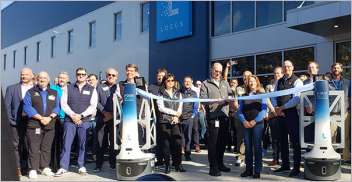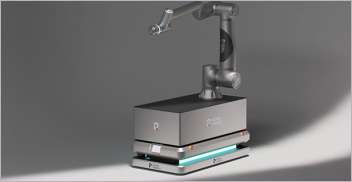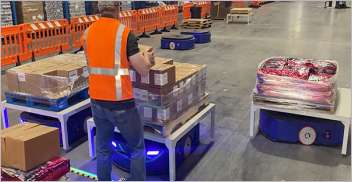For anyone interested in industrial innovation, there's a lot in the news right now about uses of autonomous mobile robots, or AMRs, in manufacturing and supply chain processes. Companies are figuring out many ways to improve or scale operations with these types of systems.
Thanks to improving perception, artificial intelligence, and fleet management tools, AMRs are finding new uses on factory floors, in distribution centers, and elsewhere.
Let's look at some of the ways in which businesses are modernizing their operations with the latest mobile robots.
1. Mobile robots can make work more ergonomic
Manufacturers often need to plan how human workers will use certain tools or move materials. This is in order to protect the body’s musculoskeletal system and avoid costly workplace injuries.
State and federal regulations and guidelines are intended to prevent ergonomics-related injuries. For instance, tools have to be placed at a height that accommodates a healthy range of motion for workers.
Robots can also eliminate the risk of repetitive stress injuries from continual repeated motions on an assembly line or in other workspaces.
Robotics don't have these same vulnerabilities because they can be designed, customized, or programmed around a single application. So companies can eliminate worker strain and fatigue by deploying the robots for such tasks rather than people.
2. AMRs promise to improve safety
Robots can also help in a range of situations where safety is a big concern. One obvious example was during the COVID-19 pandemic, when social distancing was often required.
Robots allowed for more staggered workers, leading some companies to realize how much more they could do with automation and mobile robots.
Similar benefits are possible when dealing with hazardous chemicals or working around dangerous equipment. Suppose there’s a particular job that is needs to be done in close proximity to a hazardous blade or caustic chemicals.
Not only can robots reduce risk by protecting human workers, but they can also reduce corporate liability.
3. Automation can link parts of a process
Another range of use cases for mobile robots in industry has to do with connecting disparate parts of a production process.
Traditional assembly lines involved one person completing a task and then handing off the workpiece to another person. This took some deliberate communication and cooperation, which was part of the workflow.
Mobile robots can be the go-betweens for either humans or other machines. They can take over the handoff of products or projects from one station to another.
For example, Amazon has been testing robots for picking and shipping processes. The e-commerce company also uses uses robots and ergonomics to put totes at manageable heights or human staffers.
4. Mobile robots can navigate on their own
Mobile robots can also map and navigate difficult environments or complex layouts, such as a warehouse with a lot of different inventory in different places.
One of the most common use cases would be to have AMRS that know where every part of a floor plan is. They could then navigate well around obstacles, avoiding people's workspaces and other off-limits areas.
This is related to the next point.
5. AMRs offer agility
Another popular reason to adopt mobile robots is that they can adapt to changing product flows and environments, unlike fixed conveyors.
When a factory or warehouse hires a human worker, each one must ascend a learning curve to eventually know where everything is in a given facility. When those things change, they have to spend time learning everything over again.
A well-programmed mobile robot can know the entire layout immediately, and uses can easily change it when a process or floor plan changes. More flexible than automated guided vehicles (AGVs), AMRs are suitable for scaling and dynamic environments.
6. Industrial robots have evolved from machine to machine
Prior to the advent of AI and modern robotics, the standard in manufacturing was called machine-to-machine or M2M. This basically had to do with either Ethernet connections or other types of wired or wireless connections that allowed individual machines to talk to one another and collaborate on tasks.
Modern AMRs go beyond that by untethering machinery or equipment from one static workspace. The above use cases show how mobile robots can take on much more dynamic role in the workplace.
Think about how your business can benefit from robotics alternatives and upgrades. It’s also important to think about maintenance and service plans to keep servo motors, boards, and everything else in good condition. You can get what you need to succeed in the age of AI.
About the author
Justin Stoltzfus is a freelance writer for WakeIndustrial.com and writes for local newspapers in central Pennsylvania, as well as numerous other digital publications covering news in the technology sector. He is a graduate of James Madison University in Harrisonburg, Va. This column is reposted with permission.
Article topics
Email Sign Up

